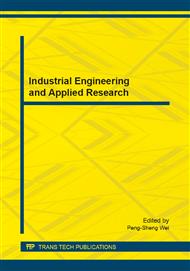p.111
p.115
p.119
p.123
p.127
p.133
p.137
p.143
p.148
Finite Element Analysis of Magnetization Reversal Effect Based on Ferromagnetic Specimens
Abstract:
Using large finite element analysis (FEA) software ANSYS, the stress-magnetization effect on 20# steel specimens with different shape notches is simulated under the geomagnetic field and tensile load. With the stimulation, the magnetic flux leakage fields at certain positions of the surface specimen were measured. Through analysis the relationship between the magnetic flux leakage fields of certain points with tensile stress, the results showed that the magnetic field value at certain positions of specimen surface first decreases and then increases along with the increase of stress, which is called magnetization reversal phenomenon; Different gaps and different positions of the specimen show different magnetization reversal rules; By measuring the maximal variation of the magnetic field value △Hmax at certain positions of the surface specimen and by analyzing its change law, we can roughly estimate specimen stress size and distribution regularity of stress. Moreover, this article also discusses the effect of lifts-off of the probe on the law of stress magnetization.
Info:
Periodical:
Pages:
127-132
Citation:
Online since:
August 2014
Authors:
Price:
Сopyright:
© 2014 Trans Tech Publications Ltd. All Rights Reserved
Share:
Citation:


